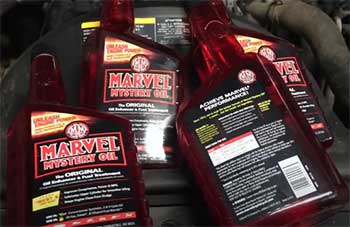I’m stoked to share my experience with Five8 coilovers, a game-changer for anyone looking to upgrade their car’s suspension. If you’re chasing better handling, a lower stance, and a smoother ride, these coilovers are worth your attention.
They’re affordable, reliable, and built for enthusiasts like you and me who want performance without breaking the bank.
In this review, I’ll walk you through my journey with Five8, break down the pros and cons, share maintenance tips, and compare them to other brands. Trust me, by the end, you’ll see why Five8 deserves a spot on your car.
My Experience With Five8 Coilovers
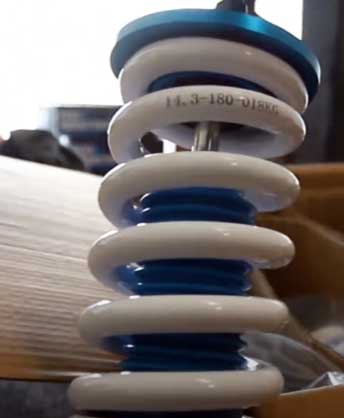
Picture this: I’m cruising down a twisty backroad in my Honda Civic, the kind of road that begs for tight cornering and a planted ride.
Before I installed Five8 coilovers, my stock suspension felt like it was fighting me—too soft, too floaty, and that annoying wheel gap made my car look like it was ready for an off-road adventure, not a spirited drive.
I knew I needed an upgrade, and after scouring forums and talking to gearhead friends, I landed on Five8 Industries’ SS coilovers.
At around $600, they promised performance without draining my wallet.
Installation was my first hurdle. I’m no stranger to a wrench, but I’m not a pro mechanic either.
The kit arrived with adjustable end links, which was a nice surprise, but the instructions? Practically nonexistent.
I leaned on YouTube tutorials and some trial and error to get them mounted. Once installed, the transformation was immediate. My Civic dropped about 1.5 inches, erasing that awkward wheel gap.
The first drive felt like a revelation—crisp handling, reduced body roll, and a ride that felt connected to the road. Cornering became a joy, and I could feel the suspension soaking up bumps better than stock, though not without some quirks I’ll get into later.
I’ve been running these coilovers for six months now, through daily commutes, weekend canyon runs, and even a few autocross events. They’ve held up well, but they’re not perfect.
The adjustability lets me tweak ride height and preload, which is awesome for dialing in the stance, but I’ve noticed some bounce on rough roads, especially when I first set them up.
After some tweaking, I got the damping just right, but it took patience. Overall, Five8 coilovers have made my car feel like a new machine, and I’m excited to break down what makes them shine and where they fall short.
Pros of Five8 Coilovers
- Affordable Price Point

Let’s talk money—you’re getting a lot of bang for your buck with Five8.
At roughly $525-$600 during sales, these coilovers are a steal compared to premium brands like KW or Bilstein, which can easily run $1,500 or more.
For budget-conscious enthusiasts like me, Five8 delivers performance that punches above its price tag.
You’re not sacrificing quality either; the materials feel solid, and the one-year warranty gives peace of mind.
If you’re building a car on a budget but still want that lowered, aggressive stance, Five8 makes it accessible without feeling cheap.
- Adjustable Ride Height
One of my favorite things about Five8 coilovers is how customizable they are. You can drop your car anywhere from a subtle half-inch to a slammed 2.5 inches, depending on your vibe. I went for a moderate drop to keep my Civic practical for daily driving while still looking sharp.
The threaded shock bodies make adjustments straightforward, though you’ll need a spanner wrench (included, thankfully). This flexibility means you can fine-tune your car’s look and handling for street, track, or show without needing a new setup. It’s like having multiple suspensions in one.
- Improved Handling and Cornering
The handling upgrade is where Five8 really flexes. On my first autocross run, I noticed how much flatter my car stayed through corners. Body roll? Almost gone. The coilovers’ stiffer spring rates and monotube design give you a planted feel, making your car respond quicker to steering inputs.
Driving through twisty roads feels like you’re glued to the pavement, and that’s not just hype. Compared to my stock setup, Five8 coilovers make spirited driving way more confidence-inspiring, whether you’re dodging cones or carving canyons.
- Decent Build Quality
For the price, I was pleasantly surprised by the build. The shocks use high-quality materials, with a 20mm piston rod for MacPherson setups and a 14mm rod for non-MacPherson suspensions. They feel sturdy, and after six months of mixed driving, I haven’t noticed any leaks or weird noises.
The powder-coated springs resist corrosion, which is a big deal if you live somewhere with salty winters. While they’re not as polished as top-tier brands, Five8’s durability has held up well for a daily-driven car.
- Easy to Source and Great Customer Support
Five8 Industries, based in Los Angeles, makes it easy to get these coilovers. Their website is user-friendly, and they often run sales (I snagged mine during a “Cleaning Sale” for $525).
Their customer service is a standout—when I emailed them about setup tips, they responded within 24 hours with solid advice. For a smaller brand, that kind of support is huge. You’re not left guessing, and they seem genuinely invested in helping you get the most out of their product.
Not-So-Good Parts of Five8 Coilovers
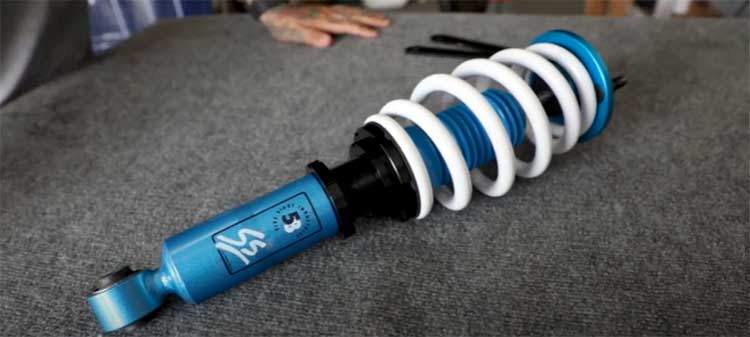
- Limited Damping Adjustability
Here’s where things get a bit bumpy. Five8 SS coilovers don’t offer adjustable damping, which is a bummer if you want to fine-tune the ride. Out of the box, the damping is set on the firmer side to prevent bottoming out when lowered, but this can lead to a bouncy ride on rough roads.
I noticed this on my daily commute over pothole-riddled streets—my Civic felt jittery until I adjusted the spring preload. Compared to brands like Tein, which offer adjustable damping at a similar price, this is a noticeable drawback.
- Sparse Instructions
If you’re new to coilovers, brace yourself for a challenge. The included instructions are basically a single sheet with vague diagrams. I spent hours cross-referencing online guides to get the installation right.
The adjustable end links were a nice touch, but figuring out how to set them up properly took some guesswork. If you’re not mechanically inclined, you might need a shop’s help, which adds to the cost.
Clearer instructions or a setup guide on Five8’s website would make this a lot less frustrating.
- Not Ideal for Harsh Conditions
While the build quality is solid, Five8 coilovers aren’t the best for extreme environments. If you live in a place with brutal winters or constant rain, the lack of advanced sealing can be an issue.
I’ve read reports of budget coilovers rusting prematurely in salty conditions, and while I haven’t had problems yet, I’m extra cautious about cleaning them. Higher-end brands like Ohlins have better weatherproofing, so if you’re in a harsh climate, you might want to weigh that before buying.
- Noise on Rough Roads
One thing that caught me off guard was the noise. On smooth pavement, Five8 coilovers are quiet, but hit a rough patch, and you’ll hear some clunks or rattles, especially if you haven’t dialed in the preload perfectly.
It’s not a dealbreaker, but it’s noticeable compared to my friend’s Tein setup, which stays hushed even on beat-up roads. Tightening everything down helped, but if you’re sensitive to suspension noise, this might bug you.
Maintenance Tips For Five8 Coilovers

- Regular Cleaning to Prevent Corrosion
Living in a city with occasional rain, I’ve learned that keeping your coilovers clean is non-negotiable. Road grime, salt, and dirt can build up on the threads and springs, leading to corrosion or seized adjustments. Every couple of months, I hose down the coilovers with water, use a mild degreaser, and dry them thoroughly.
Pay extra attention to the threaded shock bodies—use a wire brush to clear debris. A quick spray of silicone lubricant on the threads keeps them moving smoothly. This routine takes about 30 minutes but can add years to your coilovers’ life.
- Check and Adjust Preload Periodically
To keep the ride smooth, check your spring preload every 3-4 months, especially if you’re tweaking ride height often. I noticed my Civic got bouncy after a few months because the preload had shifted slightly.
Grab a spanner wrench, loosen the locking collar, and adjust the preload to match your driving style—tighter for aggressive driving, looser for comfort. If you’re unsure, Five8’s customer support can guide you. This small tweak can prevent excessive wear on the shocks and keep your car handling like a dream.
- Inspect for Leaks and Wear
Coilovers take a beating, so inspect them regularly for leaks or damage. Every oil change, I crawl under my car with a flashlight to check for oil residue around the shock seals. If you spot leaks, it’s time to contact Five8 for warranty support.
Also, listen for weird noises like clunks—they could mean loose bolts or worn bushings. Tightening everything down with a torque wrench (check your car’s specs) usually fixes it. Catching issues early saves you from costly repairs down the road.
- Balance Ride Height and Performance
When adjusting ride height, don’t just slam your car to the ground for looks—it can ruin handling and wear out the shocks faster. I learned this the hard way when I dropped my Civic too low and scraped my driveway.
Aim for a balance: about 1-2 inches lower than stock is usually safe for daily driving. Measure from the fender to the wheel hub to track your settings. If you’re hitting the track, raise it slightly to avoid bottoming out. This keeps your Five8 coilovers performing optimally without unnecessary stress.
- Winter Storage and Protection
If you live in a snowy area, consider raising your car’s ride height in winter to avoid salt and slush buildup. I also spray a rust inhibitor on the coilovers before winter hits—it’s a cheap way to protect the metal.
If you store your car during the cold months, jack it up to take weight off the suspension. This prevents the springs from settling and keeps the shocks in good shape. A little prep goes a long way to ensuring your Five8s survive harsh seasons.
Expanding On The Five8 Experience
Now that I’ve covered the basics, let’s talk more about what it’s like living with Five8 coilovers day-to-day. One thing I love is how they’ve transformed my Civic’s personality. Before, it was just a commuter car—reliable but boring.
Now, it feels like an extension of my driving style. Every turn is an excuse to push the limits, and the coilovers respond with confidence. I’ve taken my car to a few local car meets, and the lowered stance always gets compliments. People assume I spent way more than I did, which feels pretty good.
But it’s not all sunshine. The bounce issue I mentioned earlier was a real headache at first. On my commute, there’s a stretch of road with cracked asphalt that felt like a trampoline until I adjusted the preload. It took a weekend of tinkering to get it right, and I wish Five8 included better guidance.
Once dialed in, though, the ride smoothed out, and I’ve had no major issues since. It’s taught me that coilovers, especially budget ones, require some patience to perfect.
I also appreciate how Five8 fits into my lifestyle. I’m not a pro racer, just a guy who loves driving and wants his car to look and feel good. The coilovers let me tweak the height for different occasions—like raising it slightly for a road trip to avoid scraping.
That versatility is a big win for someone who uses their car for everything from grocery runs to track days. Plus, the warranty gives me confidence that Five8 stands behind their product, even if it’s not a household name like Bilstein.
One unexpected perk? The community around Five8. I’ve connected with other owners on forums like Cruzetalk.com, where people share setup tips and troubleshooting advice. It’s cool to see how others are using these coilovers on different cars, from BMWs to Chevys.
The consensus seems to be that they’re a solid choice for the price, though some folks echo my gripes about the instructions and damping. Knowing I’m not alone in the learning process makes it feel less daunting.
Real-World Performance And Longevity
After six months and about 8,000 miles, my Five8 coilovers are still going strong. I’ve driven through rain, dust, and the occasional gravel road, and the shocks haven’t leaked or shown signs of wear. The springs still look good, thanks to my cleaning routine, and the adjustments haven’t seized up.
That said, I’m careful to avoid salty roads in winter, as budget coilovers can be prone to rust over time. Compared to a friend’s BC Racing setup, which has held up for two years with minimal maintenance, Five8 feels competitive but not bulletproof.
One thing I’ve noticed is how the coilovers change your car’s dynamics. My Civic’s steering feels sharper, and the lower center of gravity makes it feel more planted. But you have to be mindful of speed bumps and steep driveways—lowering your car means planning your routes a bit more carefully.
I’ve scraped my front lip a couple of times, which is more about my driving than the coilovers, but it’s a reality of going low.
Comparison of Five8 Coilover With Other Brands
Let’s see how Five8 SS coilovers stack up against some popular competitors: Bilstein B6, Tein Street Advance Z, and Godspeed Mono SS. I’ve driven cars with these setups or talked to buddies who have, so I’m breaking it down based on real-world experience.
Each brand brings something unique, but Five8 holds its own in some surprising ways. Here’s how they compare across key areas like price, adjustability, ride quality, build durability, and suitability for daily driving.
- Five8 Vs. Bilstein B6 Coilovers
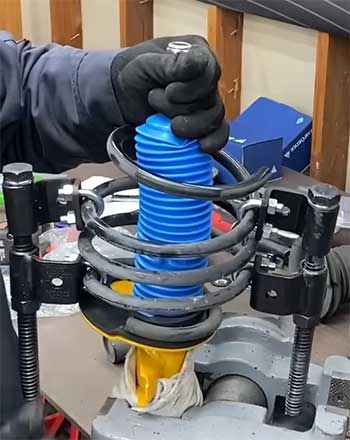
Bilstein B6 coilovers, priced around $1,200-$1,500, are a step up in the performance world, known for their German engineering.
I drove a friend’s VW GTI with B6s, and the ride was smooth as butter, even on rough city streets.
They use a monotube design like Five8, but Bilstein’s damping is non-adjustable and tuned for a balance of comfort and sportiness.
Five8, at $525-$600, is way more budget-friendly and offers adjustable ride height, which Bilstein lacks—you’re stuck with a fixed drop of about 1-1.5 inches.
This makes Five8 better for those chasing a slammed look.
However, Bilstein’s build quality feels more polished.
The B6s have superior sealing, making them ideal for harsh winters, while Five8 requires diligent cleaning to avoid rust. For handling, Bilstein’s damping gives a refined feel, soaking up bumps better than Five8’s firmer setup.
If you’re daily driving and value comfort over customization, Bilstein B6 is the winner. But for enthusiasts on a budget who want a lower stance, Five8 delivers 80% of the performance for half the price.
- Five8 Vs. Tein Street Advance Z Coilovers
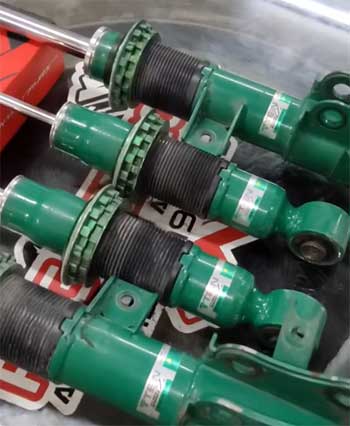
Tein Street Advance Z, retailing at $600-$700, is a close rival to Five8, and I’ve ridden in a Mazda Miata equipped with them.
Tein’s big advantage is adjustable damping—16 levels, to be exact—which lets you dial in the ride from soft to stiff.
This makes them more versatile than Five8, which has fixed damping that leans firm.
On the Miata, Tein’s setup was noticeably smoother on potholed roads compared to my Civic’s Five8 coilovers, which can get bouncy without preload tweaks.
Both brands offer adjustable ride height, but Tein’s range is slightly narrower (0.5-2 inches vs. Five8’s 0.5-2.5 inches), so Five8 wins for aggressive drops.
Price-wise, Five8 is often cheaper, especially during sales, and their Los Angeles-based support is more responsive than Tein’s, which I found sluggish when a friend needed help.
Build quality is comparable—both use decent materials, but neither is built for extreme weather like premium brands. For daily drivers who want tunability, Tein is the pick; for budget builds with a focus on stance, Five8 edges out.
- Five8 Vs. Godspeed Mono SS Coilovers
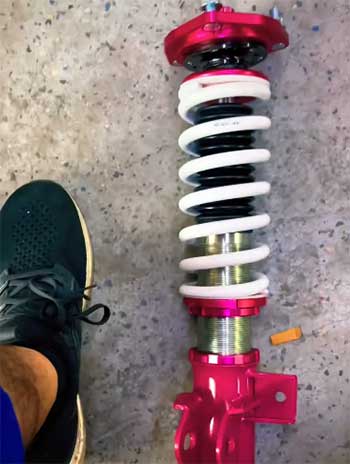
Godspeed Mono SS coilovers, priced around $500-$600, are Five8’s closest competitor in the budget segment.
A buddy with a Nissan 350Z runs Godspeed, and I’ve taken it for a spin.
Like Five8, they use a monotube design and offer adjustable ride height, but Godspeed includes 16-way damping adjustment, giving it a leg up for fine-tuning.
On the 350Z, the Godspeed setup felt slightly softer than Five8, which was great for cruising but less planted in hard cornering compared to my Civic’s sharper handling.
Build-wise, both are solid for the price, with powder-coated springs and decent corrosion resistance, though neither is ideal for salty winters without maintenance.
Godspeed’s instructions are a bit clearer than Five8’s vague sheet, making installation easier for DIYers.
Price is a toss-up—both are dirt cheap, but Five8’s frequent sales can drop it below Godspeed.
Customer support is where Five8 shines; their quick responses outpace Godspeed’s hit-or-miss service. If you want damping adjustability on a tight budget, Godspeed is better; for raw value and handling, Five8 is tough to beat.
Why Five8 Stands Out
What makes Five8 special is their focus on accessibility. They’re not trying to compete with Ohlins or KW—they’re for guys like me who want a solid upgrade without spending a fortune.
The Los Angeles-based brand feels like it’s run by enthusiasts who get what we’re after: a car that looks good, handles well, and doesn’t cost an arm and a leg. Their sales and responsive support add to the appeal, making you feel like you’re not just buying a product but joining a community.
Compared to other budget brands, Five8 strikes a balance between price and performance. They’re not as refined as Tein or BC Racing, but they’re cheaper and still deliver a noticeable upgrade over stock.
For someone new to coilovers or working with a tight budget, Five8 is a great entry point. You get the thrill of a lowered, sporty ride without the sticker shock of premium brands.
Also Read: Is KMC Wheels Worth It?
Frequently Asked Questions (FAQ)
Five8 coilovers are designed and assembled in Los Angeles, California, by Five8 Industries. The company emphasizes quality control and local production, which is a big reason their customer service feels so personal. While some components might be sourced globally (a common practice in the industry), the final product comes together in the U.S., giving you a blend of affordability and American-made reliability.
Longevity depends on use, maintenance, and environment. Premium brands like Ohlins and KW often last the longest—up to 5-7 years with proper care—thanks to superior materials and sealing. Five8 coilovers, with regular maintenance like cleaning and preload checks, can last 3-5 years for daily driving. BC Racing and Bilstein also offer good durability, often outlasting Five8 by a year or two in harsh conditions due to better weatherproofing.
Coilovers, including Five8, can have downsides. They’re often stiffer than stock suspensions, which can make daily driving less comfortable, especially on rough roads. Installation can be tricky without clear instructions, and budget options like Five8 may lack adjustable damping, limiting ride customization. They’re also prone to rust in harsh climates if not maintained, and lowering your car too much can lead to scraping or alignment issues. Lastly, noise like clunks can occur if not set up properly.
Yes, coilovers like Five8 are great for daily drivers if you prioritize handling and aesthetics over stock comfort. They offer a sportier ride and customizable height, perfect for enthusiasts. However, the firmer ride and potential for noise on rough roads might annoy some drivers. If you keep the drop moderate (1-2 inches) and maintain them well, Five8 coilovers strike a solid balance for daily use without sacrificing too much comfort.
Conclusion: Why Five8 Coilovers Are Worth It?
After months of driving with Five8 coilovers, I’m convinced they’re a fantastic choice for anyone looking to upgrade their car’s suspension on a budget. They deliver sharp handling, a sleek stance, and solid build quality without the hefty price tag of premium brands.
Sure, they’ve got quirks—like limited damping and sparse instructions—but the value and performance make them a no-brainer for enthusiasts. If you want to transform your daily driver into something that turns heads and hugs corners, grab a set of Five8s.
You won’t regret it.
